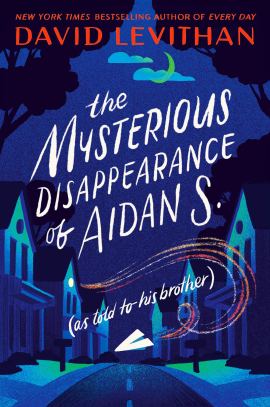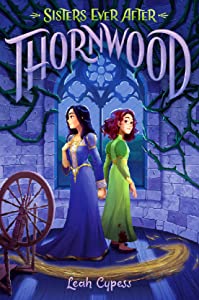 Rescue at Lake Wild by Terry Lynn Johnson, 2021
Rescue at Lake Wild by Terry Lynn Johnson, 2021
Recommended for grades 4-6; realistic fiction, mystery
Brief Review:
Twelve-year-old Madi and her friends Jack and Aaron stumble across both a mystery and a rescue mission when they discover two dead adult beavers and two orphaned beaver kits. Madi considers herself an “animal whisperer” and a future wildlife rehabilitator, so she takes charge of caring for the kits even though her mother has banned her from bringing rescue animals home. Madi’s sister Marley finds out about the beavers quickly, but the girls’ mother is out of town and Marley agrees to keep the secret in exchange for Madi’s complicity in the party she’s planning. Meanwhile, Jack is determined to find out what happened to the parent beavers. He and his dog Lid manage to uncover several clues, but the kids also learn that beaver dams have been causing flooding in town, and most of the local people would be happy to see the beavers dead. Madi has an idea for solving that problem, but just when her plan seems to be going well, the kits disappear during Marley’s party and Mom returns at the worst possible time. This book will appeal strongly to animal lovers and it contains a lot of interesting information about beavers. However, it lacks believability and relevance to contemporary middle-grade readers, mainly due to the amount of independence that the young protagonists are allowed to have, and the plot is a little too simple to make the story memorable or distinctive.
Long Review:
Twelve-year-old Madi is an “animal whisperer” and aspiring wildlife rehabilitator, but she isn’t supposed to bring home stray or orphaned animals anymore. Her mom has made that quite clear. In fact, her long-anticipated trip to meet Jane Goodall is at stake. But when Madi, along with her friends Jack and Aaron, hear sounds coming from a beaver lodge shortly after finding two dead adult beavers, Madi knows that the beaver kits need her help.
Madi swims into the beaver lodge and finds two kits. She and her friends name them Phragmites (Phrag for short) and Cooler. Madi hides the beaver kits in her clubhouse and takes charge of their care and feeding. Since her late grandmother had been a wildlife rehabilitator, Madi already knows a lot about caring for different types of animals, and she even happens to have beaver formula on hand. She uses her grandmother’s logbook both to learn more about caring for beavers and to record her own experiences with the kits. Luckily for Madi, her mother is currently out of town. Madi’s sister Marley discovers the beaver kits, but she’s willing to keep Madi’s secret in return for Madi’s complicity in the party she plans to throw.
Meanwhile, Jack wants to find out what happened to the parent beavers. He and his dog Lid lead Aaron and Madi in an investigation and the kids quickly learn that a lot of the local people hate beavers. Their dams are causing flooding, and a group of town residents are considering putting a bounty on beavers to incentivize people to kill them. Now the kids need to find a way to change the townspeople’s minds about beavers in addition to caring for the two they’ve rescued and finding out who exactly killed the parents.
Madi and her friends discover that they can control where the beavers build dams by manipulating the sounds of running water. With the beaver kits, that means playing water sounds on an iPod; in the wild, it involves moving poles to create extra turbulence. The experiment is successful, but everything goes wrong on the night of Marley’s party. The beaver kits go missing and Madi’s mom gets home early, thereby discovering both Marley’s party and Madi’s disobedience in sheltering orphaned wildlife. Madi’s trip to see Jane Goodall is cancelled. But as far as Madi is concerned, the bigger issue is figuring out how to save the beavers.
This animal rescue story is nostalgically reminiscent of similar ‘90s stories, most notably the Animal Ark series. (written by several different authors and published between 1994 and 2008 under the pen name Lucy Daniels in the UK and Ben M. Baglio in the United States) For adult readers, there’s another layer of nostalgia in that there’s little mention of current technology like cell phones and the internet. The kids spend most of their time outdoors and are free to go wherever they want unsupervised. For the target audience of contemporary middle-grade readers, though, that nostalgia and sense of independence may constitute a lack of believability and detract from the appeal of this story.
However, for animal lovers, this book contains enough interesting information to offset those drawbacks. I was admittedly skeptical of some of the depictions of beaver behavior, but after doing a little light research, I found that this book is actually very accurate and that Madi’s experiments with the water noises are based on real events and experiments. In a few passages, the book also emphasizes the importance of leaving wildlife alone in most situations, which is obviously an important point to make to young readers who may otherwise become overzealous about their own wildlife rescue efforts.
Besides the messages and themes about wildlife, the book also discusses family and the importance of strong family relationships. Madi’s sympathy for the beaver kits and her determination to provide for them relates to this theme, but her relationships with her sister Marley and her mother also play significant roles in the plot. Her closeness to her deceased grandmother is also important. Unfortunately, these side plots aren’t given enough attention to contribute much to the overall experience of the book. Although this book will appeal to middle-grade wildlife-lovers, its plot is a little too simple to be memorable or distinctive.
 The Disappearance of Aidan S. (as told to his brother)
The Disappearance of Aidan S. (as told to his brother)  Thornwood
Thornwood